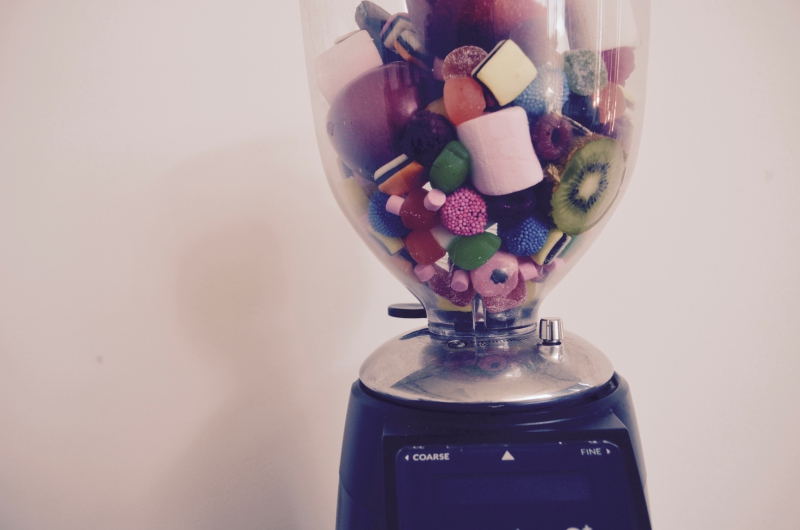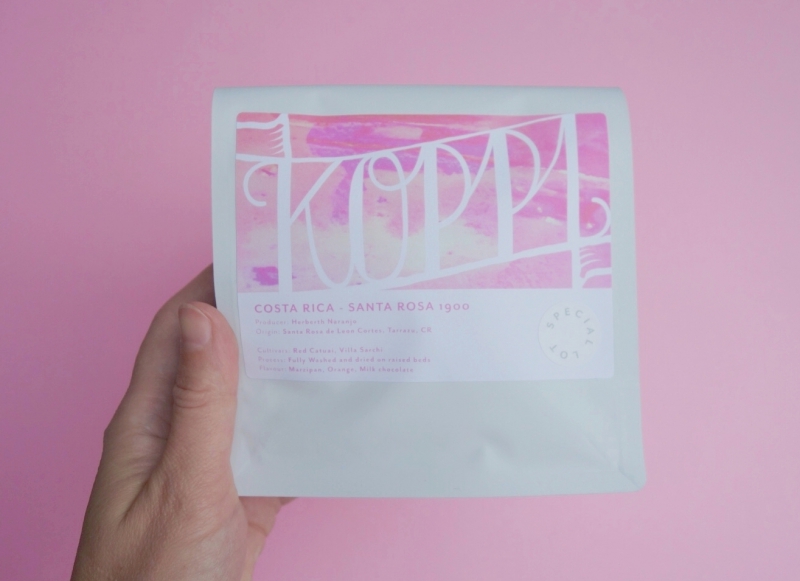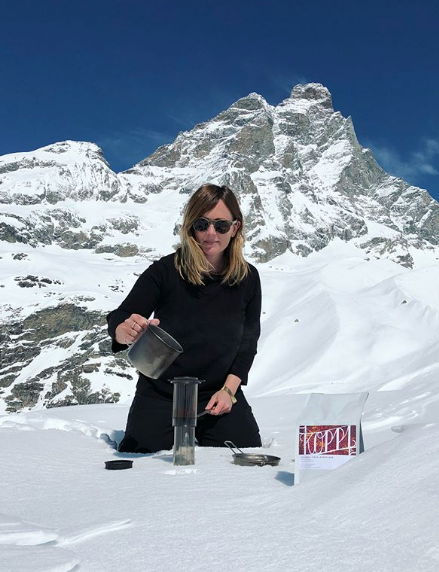
Is Sweetness the Acidity as a trend in coffee? And what does that even mean for you the coffee drinker?
We explore the concept of sweetness in coffee and chat to Anne Lunell of Koppi Roasters in Sweden about extracting the most sweetness from your coffee and her thoughts on one of the sweetest and most expensive coffees the world over, the Geisha variety.
Interview with Anne Lunell of Koppi Roasters
It may be difficult to believe, but there are trends in coffee roasting and the way roasters buy their green beans. For a long time all people wanted from coffee was a smooth and chocolatey experience and most are, understandably, still delighted by this flavour profile. Through the growth of the speciality coffee sector growing and as consumer palates have become more sophisticated, coffee producers have begun using processing methods as a creative tool. Whether accentuating fruit notes, highlighting or softening acidity, and fattening or lifting the body, this creates product differentiation. With these new processing methods at farm level and new extraction techniques at cafe level, for a number of years the fruitiness of coffee was celebrated and accentuated through lighter roasts to highlight juicy acidity. So where are we at the moment? On a quest for sweetness.
At a farm level you can see this through the rising popularity of ‘honey processing’. This technique borrows a little from both the natural and washed methods of processing. The cherry pulp has been removed, similar to the washed process, but then instead of fermenting them in tanks to remove residual mucilage, the beans are dried while varying amounts of sticky mucilage still clings to them, like the natural process. There is less fermentation during honey processing, as it is confined to the relatively short time when the mucilage dries, resulting in a sweet cup with lower acidity. It’s a relatively recent practice, just over a decade old, that started in Costa Rica and spread throughout Central America. With variations in the amount of mucilage left on the seed, and hence, sweetness, additional categories of honey processed coffee have been developed, and yellow, red, and black are used to describe these variations.
According to a survey by the team over at industry-focused website, Perfect Daily Grind, during the World of Coffee competition in Budapest in 2017, various parties from all realms of the coffee supply chain confirm that sweetness is winning out as the most desired flavour profile currently. Mark Pearce of Toddy LLC’s speculated that cold brew consumption is led by a sweet tooth among younger generations – among other factors. Natural coffees are particularly popular for their sweet notes too. Mariana Proença, Content Director of Brazil International Coffee Week had this to say, “Year by year, the most important flavour is changing. It used to be acidity, but now it’s sweetness. We’re seeing this in the demand for naturals here in Brazil.”
World Championship coffees are often at the cutting edge of newest trends. Chad Wang described his World Brewer’s Cup winning coffee, a natural process Geisha, as having pineapple acidity and honey sweetness. Five out of six of the baristas at the 2017 World Barista Championship used the Geisha varietal of coffee known for it’s delicate floral aroma and gentle, sweet nature. In 2016, Berg Wu won with just such a coffee.
We chatted to Anne Lunell to get her insights into these trends, from a roastery that has been in the business for over 10 years.

When you started Koppi Roasters over 10 years ago, did you ever think the journey would get you to where you are today? How has the coffee landscape changed around you?
Lots has changed over the past 10 years. When I started working with specialty coffee there was barely a scene in Sweden. Less than a handful of good roasters had started their businesses in Europe. It was difficult to know what to expect from such a young industry.
We always believed in what we were doing and what we tried to be creative even if it was hard at times. Over this past decade the culinary scene has grown and the general public are more open-minded when it comes trying new things and paying for quality products.

Have you adjusted to life without a cafe yet?
It has only been two months since we closed our café after running it for over 10 years. We enjoyed having our coffee shop and we wouldn’t be where we are today without it, but having said that I am the first to acknowledge that it was time consuming and required too much of our energy. It was a great experience but it is a relief to be able to focus completely on our roastery and develop that further.
In your team, you do the sourcing and Charles does the roasting. This must mean that your idea of what you're looking for in a green coffee is very well aligned, what are your criteria for delicious coffee?
Our approach when sourcing coffee has changed slightly over the past ten years. In the beginning we were on the hunt for exceptional coffees. As soon as we established our first relationship to the people we work with in Costa Rica our approach started changing. Seeing how much love and attention they are putting in to producing their coffee is humbling. It both makes us want to showcase their amazing coffees the best way we can and also we deeply value the long relationship we have built and would never abandon them. Producing coffee is incredibly hard and risky. The effect of climate change is showing in many regions. For us, it would be irresponsible to abandon a producer for a year just because the cup quality can fluctuate a little.
Is coffee naturally sweet? What effects sweetness at a processing level? Do particular varietals have more natural sweetness?
Coffee grown at higher altitudes allows a slower ripening of the cherries which often results in more sweetness, acidity and complexity in the cup. Picking the cherries when they are perfectly ripe also maximise the sweetness.
As with grapes different coffee varieties possess different qualities and flavours. The taste you find in coffee comes down to soil, micro-climate, variety, picking, sorting, processing, drying and last but not least the roasting and brewing.
Would you say that for a while specialty roasters have for the past couple of years generally been chasing acidity in their final product? And what do you think has started to shift in this thinking?
Acidity in coffee will always be a desirable flavour to me. However, the intensity of the acidity can vary as long as it is balanced. I also think that roasters now want to roast in a way that make their coffees easier to brew which means a lot of roasters are probably aiming to get the coffees a bit more soluble and avoid the underdeveloped profiles that can come across as more acidic possibly.
How do you highlight sweetness during the roast process?
When we roast we try to bring out the true characters of the coffee. What we are looking for in the cup is lots of sweetness backed up by balanced acidity and minimal bitterness. This of course comes both from the coffee itself but also from the roast process. Whenever we get a new coffee we do a few different roast profiles to find the one that makes that coffee shine. We keep experimenting over time since the greens changes and we have to adapt the roasting.
What is your opinion on the fascination with the Geisha/Gesha variety of coffee? Is the hype justified?
This is a complex question that requires a long and thorough answer, perhaps too long for this interview, but I will give it my best. First of all I just want to point out that I am not an agronomist and am perhaps not qualified to answer this question. From my understanding there are many strains of Geisha – some of them are more strong and pure compared to others. Depending on the DNA of the Geisha the taste but also the physical qualities can vary vastly. In some cases you have the delicate, floral and complex characters that made the Geisha famous from the start. But in other instances the plant itself, in combination with terroir, weather, processing and so on offers a very different palette. The problem is that many times both the farmer and also the clients, that are on the hunt for the classic Geisha, get let down by what is delivered in the cup. This is a sad reality for many farmers that are perhaps putting their hope in making an extra profit on selling more exclusive varieties. But if the coffee doesn’t reach the buyers expectations they are not willing to pay extra for it even though the actual cup is not too bad.
My hope is that our industry matures and that we recognise the obvious problems that we are facing. Climate change, the aging generation of producers and fast spreading diseases are all things that will affect us. By paying more for “lower” scoring coffees, supporting growers that work sustainably, both environmentally and ethically, and avoid paying “too much” for unicorn coffees will be a good start. The producer doesn’t survive by selling a bag of Geisha or SL28 at a high premium, but will hopefully get an incentive to continue producing coffee if they get paid more for the rest of the coffee they produce. More or less the same amount of work goes into the production of both lower scoring and higher scoring coffees. The difference between the two might be the quality of the soil, altitude, varietal etc.
Many other varietals offer similarly rewarding and complex profiles, so perhaps in the interests of sustainability and ethics; it is also good to promote and support well processed and well grown coffees regardless of how revered the variety may be.

Here's Anne being super cool and brewing an AeroPress in the snowy mountains :)